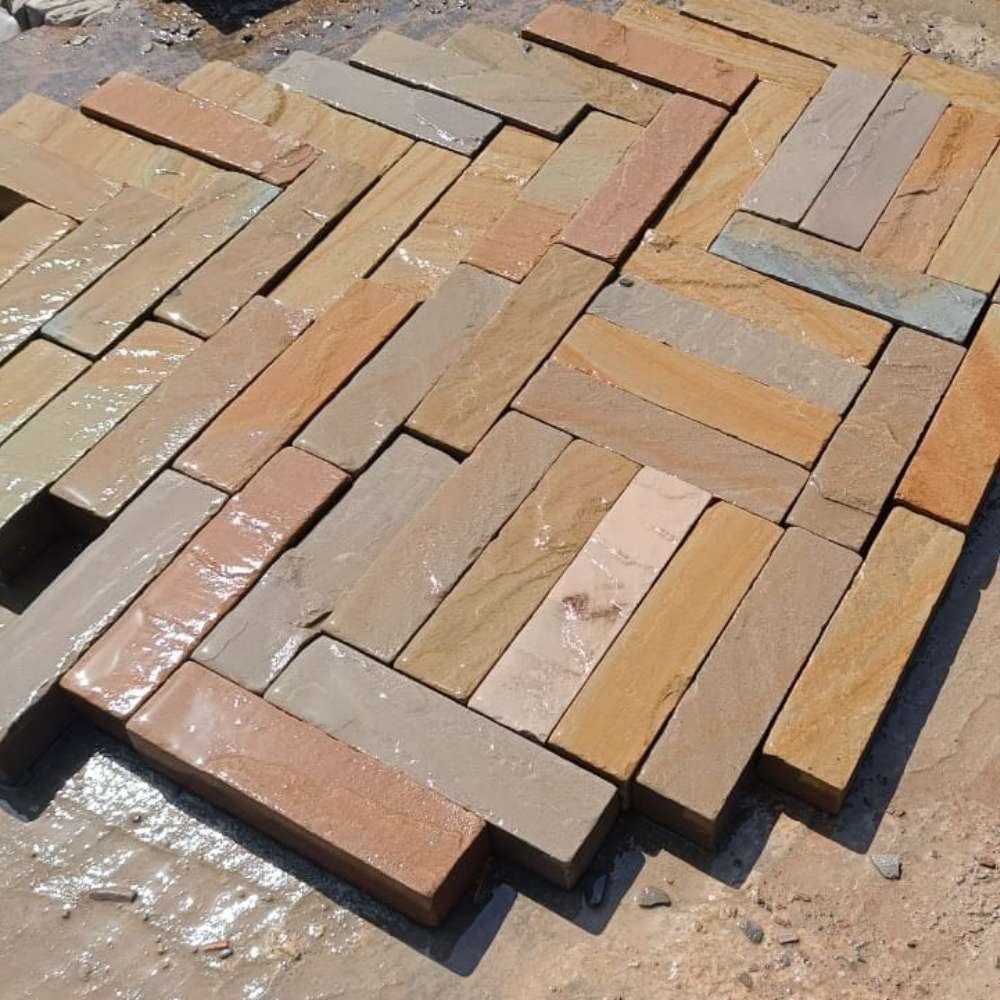Natural Stone Paving: Creating Beautiful, Long-lasting Outdoor Spaces
07 March 2025
23 January 2025
15 January 2025
14 December 2024
05 June 2024
13 May 2024
24 April 2024

Sandstone paving brings timeless elegance to any outdoor space with its natural, earthy tones and unique patterns. Each slab tells its own story, evolving in character over time. It's an ideal choice for those seeking a blend of durability and aesthetic appeal, making it perfect for sophisticated outdoor designs.
However, to maintain its beauty, understanding the proper cleaning techniques is essential. Pressure washing can be an effective way to remove dirt, algae, and grime from sandstone paving, which can otherwise make the surface slippery and unsightly. Regular cleaning not only preserves the stone's appearance but also extends its longevity, preventing degradation from accumulated debris.
When using a pressure washer, it's crucial to start with the lowest setting to avoid damaging your beautiful paving. Sandstone, while durable, is still a natural material that requires careful handling to maintain its integrity.
In this article, we’ll deep dive into the best practices for washing sandstone paving.
Cleaning sandstone paving without causing damage can seem daunting, but with the right approach, it's manageable. Here’s a step-by-step guide to help you clean your sandstone paving safely:
By following these steps, you can keep your sandstone paving in excellent condition, ensuring it remains a stunning feature of your outdoor space for years to come.

Pressure washing can be suitable for cleaning sandstone paving, but it must be done with care to avoid damage. Sandstone is porous and relatively soft, making it vulnerable to erosion and surface damage from high-pressure water jets. When using a pressure washer, always set it to the lowest possible pressure, ideally under 1500 psi, and use a wide spray nozzle to distribute the pressure evenly.
Testing the pressure washer on a small, inconspicuous area first is a smart way to gauge its effect on the stone and minimize the risk of damage.
Pressure washing sandstone paving, if not done correctly, can lead to several issues. High-pressure water can erode the stone’s surface, stripping away its natural finish and leaving it rough and uneven. This not only alters the stone’s appearance but also increases its susceptibility to stains and grime buildup.
Moreover, pressure washing can force water into the stone’s pores, which can cause damage during freeze-thaw cycles in colder climates. Over time, this might result in cracks and degradation. Additionally, pressure washing may dislodge the sand between the paving slabs, leading to uneven surfaces and potential tripping hazards.
For these reasons, it’s generally advisable to use gentler cleaning methods to preserve your sandstone paving.
While most sandstone is vulnerable to pressure washing, some varieties are more resilient. Harder, denser types of sandstone, such as granite sandstone, may tolerate low-pressure washing better than softer varieties. However, even with harder stones, there’s always a risk of damage.
If you decide to use a pressure washer, ensure it’s set to the lowest pressure and keep the nozzle at a safe distance from the surface to avoid chipping or eroding the stone.
To protect the beauty and integrity of your sandstone paving, it’s best to proceed with caution.
Pressure washing Indian sandstone Paving requires a delicate approach. To avoid damaging the stone:
For stubborn stains, you may need to use a specialized stone cleaner. Keep the nozzle at a distance to prevent chipping, and thoroughly rinse with clean water afterward. Allow the sandstone to dry completely before use.
If pressure washing isn’t recommended or preferred, several other methods can keep your sandstone paving looking great:

To maintain the longevity of your sandstone paving, follow these cleaning tips:
With these care guidelines, your sandstone paving will remain durable and beautiful for many years to come.
Last thoughts,
In summary, while sandstone paving can be pressure washed, it requires a careful approach. Clean the surface using a low-pressure setting and a mild detergent to avoid causing damage. Always test a small area first and keep the nozzle at least 12 inches away from the stone to prevent erosion or etching.
Everything You Need to Know About Sandstone for Paving
The Stonemart offers the finest sandstone paving in a variety of colors and styles that not only look great but also stand the test of time. Whether you're refreshing your garden or designing a stylish patio, our high-quality sandstone combines durability with eye-catching appeal.
Thanks for subscribing!
This email has been registered!